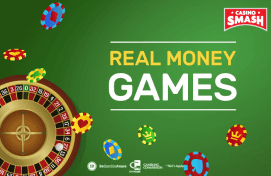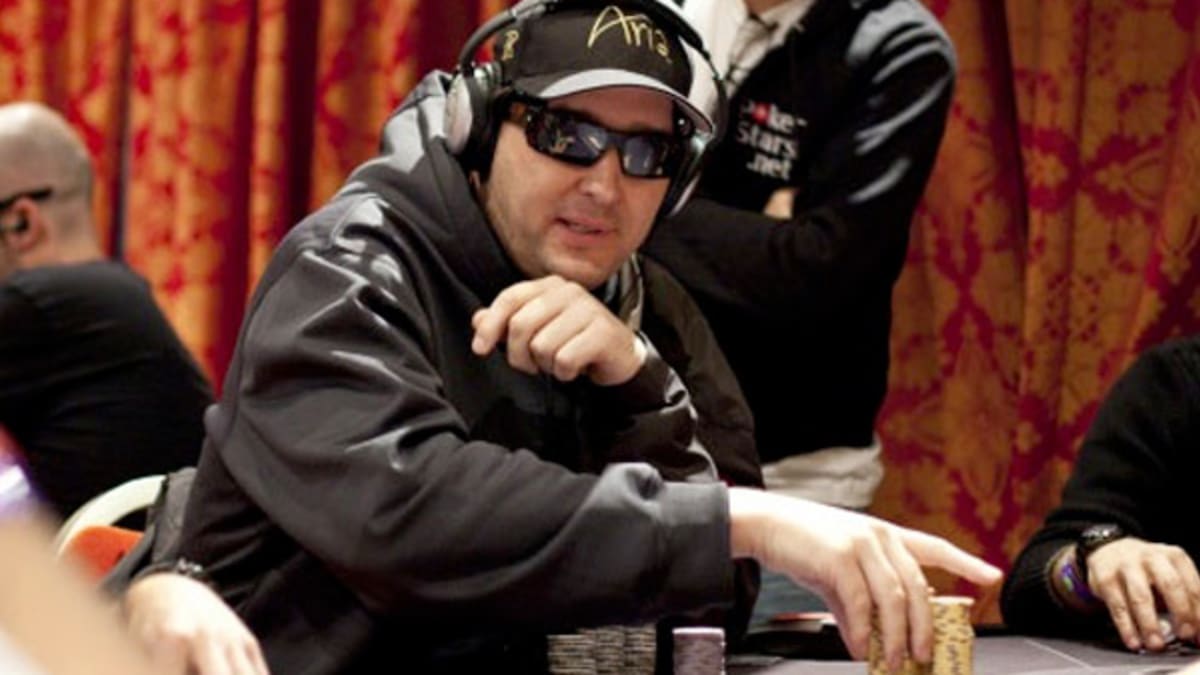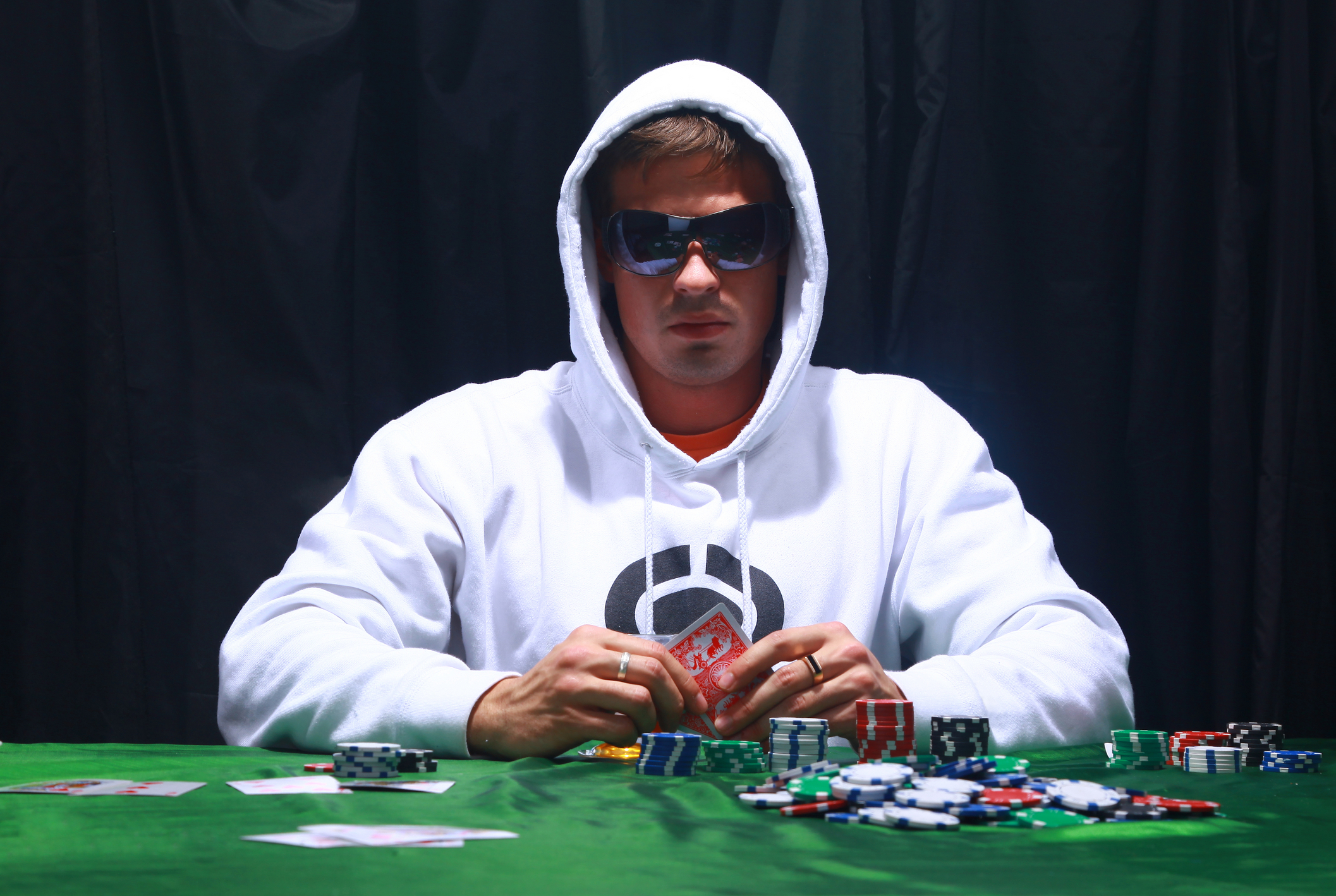How To Beat Aggressive Poker Players
Dealing with a highly aggressive poker player on your left is never an easy thing to handle. In fact it just plain sucks no matter how you cut it. The is a lot of advanced poker theory these days like The Upswing Poker Lab for example which talk about how to balance your ranges and play GTO in a spot like this. The adjustment I make for aggressive players is to adapt an opposite style of play. In other words, I will be more passive and calling station-y. This is actually common advice (to do the opposite of what the other player is doing). The most popular example of this advice in action is versus a tight opponent.
When it comes to low stakes cash games, you have probably heard advice about how to play against passive opponents many times before. Value bet them frequently, steal their blinds a lot, and keep the bluffing to a minimum if they are recreational players. These tactics often work because the vast majority of your opponents in small stakes cash games, both live and online, will fit a similarly passive profile.
But how do you play against a loose-aggressive opponent (sometimes referred to as a “maniac”) who is in there with all sorts of hands and constantly trying to bluff you? These players can be much more difficult to play against, and there is much less information out there regarding how to approach them.
To that end, in this article I am going to discuss a few ways to counteract and exploit the tendencies of a loose-aggressive opponent profitably in low stakes cash games.

Position is Vital
The first thing about playing against loose-aggressive opponents that you need to know is that having position on them is absolutely vital. It is so important to me, in fact, that I will often just get up and leave the table if an opponent like this gets a seat on my direct left.
The reason why is because the person seated directly behind you will always have a huge advantage in every single hand except when you are on the button. When it is a loose-aggressive opponent who is going to three-bet you, float you with calls, and try to bluff you every other hand, this can be an especially difficult spot.
The types of players at the poker table and what seat you have relative to them affect your success in this game than anything else. Allowing a loose-aggressive opponent to sit on your direct left and make your life miserable is like handing your opponent a knife in a fistfight.
Don’t fight uphill battles. There are plenty of other tables with more inviting seats from which to choose.
Use Their Aggression Against Them

You have probably heard the phrase “give them enough rope to hang themselves” before. Well, it is not like you should never bet against these types of players or ever try to bluff them. However, you should definitely use their aggression against them on most occasions.
This means just flatting their bets more often, especially with top pair or better postflop. Often they are just bluffing or they have a weak draw or pair and raising will just force them to fold. It is better to allow them to keep firing at the pot on later streets and stick more dead money in the middle.
This approach is not always the best preflop, though. With a big hand — especially , , , , , and — you should be reraising their opens most of the time. The reason why is because they will call a lot more often and it is obviously beneficial for us to create a bigger pot with hands this strong.
Patience is Key
One of the most difficult things about playing against loose-aggressive opponents is staying patient when you aren’t making any good hands. It is imperative that you do not lose your cool and start playing into their game.
This is exactly what they want you to do. There is nothing that they love more than getting into ridiculously huge pots with meager holdings and making enormous bluffs. You don’t need to play this same kind of game with them in order to win. And if you are running poorly, this could cause you to tilt hard as well.
It is very important not to try and fight for every pot against these players. You need to accept the fact that you will get bluffed by them on some occasions. It is okay. Just let them have a bunch of smaller pots.
Sometimes it simply will not be your session either. That is fine, too. Just make sure you don’t make the big mistake of losing your patience against them and becoming the fish yourself.
Enjoy the Ride
You have probably had a session before where you have lost big to a loose-aggressive player because they got lucky in some key hands. You have probably had several other sessions where you won big against them by simply being patient and allowing them to bluff off their stack against you.
It is important always to remember that playing against these types of players is high variance. There is no way that I am ever making any “sick folds” against these opponents, so I will be losing my stack when they cooler me every single time.
Also, sometimes they will simply draw out on you such as by hitting some ridiculous draw or backing into two pair on the river. This kind of stuff just goes with the territory when playing against these types of players.
It is important to remember, though, that these players can be insanely profitable to play against in the long run. They will sometimes run hot for a session or two, but over time many of them will lose big.
Final Thoughts
There are no easy answers to playing against a loose-aggressive opponent. But if you make sure that you always have position on them, use their aggression against them when you can, and remain patient versus them, then these players will be a huge boost to your win rate in the long run.
It is important not to get wrapped up in your short-term results in general, but especially against these players. The reason why poker is so profitable is because players like this are able to get lucky sometimes — and we all have to pay that “tax” from time to time. Just stay focused on getting the money in good and the long term math will sort itself out in the end.
Nathan “BlackRain79” Williams is the author of the popular micro stakes strategy books, Crushing the Microstakes and Modern Small Stakes. He also blogs regularly about all things related to the micros over at www.blackrain79.com.
Want to stay atop all the latest in the poker world? If so, make sure to get PokerNews updates on your social media outlets. Follow us on Twitter and find us on both Facebook and Google+!
Tags
cash game strategyno-limit hold’emloose-agressivelow stakes strategymicro stakes strategylive pokeronline pokerposition
You're a solid player, winning at the $1/$2 level in your nearby card room. You play a disciplined, tight-aggressive game. You know well how your starting cards are likely to stack up against those of your opponents, and you understand how to be aggressive in the right spots.
You've learned to read your opponents fairly well, and can often separate out the aggressive moves that mean true strength from those desperation moves that mean weakness. You're able to average about $20 an hour, chiefly by being careful, taking advantage of your bad opponents' many mistakes, and staying away from the other good players in the room when they are in a hand. Perhaps your greatest skill is game selection, ably steering yourself into those games with the worst players and the fewest good opponents.
But you're bothered by the profit-depleting rake of 10% up to $5 a hand, with another $1 going to the bad beat jackpot and yet another buck when you win and tip the dealer. Though these charges seem relatively insignificant at the time, you're good enough and thoughtful enough to realize they really cut into your bottom line in the long run. So you've sought out and helped cultivate a home game.
But the game is giving you fits, primarily because of one guy — Stewart.
Stewart is known by many other names. Some call him a table bully. Others say he's a maniac. Still others label him a LAG — a loose-aggressive player. And that he surely is. He's hyper-aggressive. He's also excellent, in a way, as he seems to win a lot — at least when he doesn't go bust.
Your game in the public poker room is generally well-controlled, with you waiting patiently, picking your spots, and pushing your advantages when you have them. But you find that Stewart disrupts your home game. In that game, you aren't the guy that others fear. You don't set the pace of the game. Stewart does those things. And he does them to you.
You find yourself off-kilter, rarely winning. You hate to admit it, but Stewart is making you think about abandoning the game and heading back to the casino, even with its big rake.
Is there anything you can do about this situation, short of figuring out a way of getting Stewart out of the game? That's the challenge for this column — to figure out how to beat the loose-aggressive player, or at least how to beat the game in which he's playing.
Here are five steps to take when Stewart — or someone like Stewart — becomes part of your home game.
1. Recognize the Problem
First and foremost, make yourself aware of what Stewart is doing to the game. A table bully is a problem for many sedate, thoughtful, good players in that the bully's involvement changes the nature of the game from the typical contest many are used to playing. Aggression, higher stakes, and bigger decisions tend to frustrate players who bet chiefly based on the absolute value of their hands.
Players can be dazzled by the constant flinging of chips and lose sight of what's most important. Similarly, players who are risk averse can be intimidated by what amounts to an increase in stakes as variance increases with a loose-aggressive player in the game.
2. Conquer Your Fear with Clear Thinking

The best way to overcome any trepidation about playing with Stewart is to strive to think clinically and objectively about his actions. You have to forget about the money by thinking clearly about what his aggression signifies.
A steady stream of bets necessarily means the starting standards of the bully are much lower than yours, and that his typical standards for raising and reraising are similarly lower. This means, generally, he has a much wider range than you have, which in turn means his average hand is going to be worse than your hand would have to be in a similar situation. This is exploitable.
3. Embrace the Variance
In such a situation, you must be willing to play more hands than you previously had by recognizing opportunities to take advantage of Stewart's weaker range. An uber-aggressive player in the game is going to make the pots bigger and the swings bigger — if you play as I suggest. Prepare for this both psychologically and financially.
If you can't handle the bigger swings, you can alter your optimal strategy by limiting losses with a shorter buy-in. Short buy-ins are a perfect counter-weight to anxiety over losses. You know, going in, that your stack will be limited, allowing you to call the large bets from your opponent (or to make your own large bets) without risking a huge percentage of your bankroll. You won't be able to maximize your wins by utilizing a short buy-in strategy, but by minimizing your losses you may put yourself on better footing psychologically, while also neutralizing many of the advantages that a LAG player might otherwise have over you.
But you must be ready to call bets before the flop when you judge your range to be stronger than the bully's, or when you otherwise think you might be able to exploit his wild style in later rounds.
4. Isolate the Bully with Your Own Aggression
It's not enough to be willing just to 'go along for the ride' against a very aggressive opponent. You must also concern yourself with the other players around the table. Ideally, you want to isolate your aggressive opponent with your own aggression.

Imagine a hand where you have and your maniac opponent raises in front of you. If you call along — as your nervous gut might encourage you to do — you may be enticing others, who also know the wild proclivity of your opponent to call behind you, attracted as they are to the pot you have enlarged by your presence.
You don't want that. You prefer going heads-up against wild Stewart, especially when you have a hand that may be only slightly better than his typical range. So raise him to lock out others who will be intimidated not by his bet but by your raise. True, they may have a stronger hands and might snap you off. But it is more likely if you call and let them call behind, they'll overtake your hand after the flop.
5. Remain Aware of the Other Players
Finally (at least for the purposes of this relatively brief article), don't let the bully's actions blind you to what the other players are doing. There's a tendency to become so focused on the bully that you fail to account for the strength of others in the hand. Keep in mind that others are allowed to have strong hands as well. In multi-way pots it's not enough just to beat the bully, you must beat the other players as well.
Conclusion
Best Poker Beats
There are of course many other steps you can take to win in a game with a loose-aggressive player. Most are very hand specific and involve figuring out ways of exploiting your opponent based on the range of hands you think he is on in different situations. But we'll save that for another column.
For now, though, try these five steps and start beating the Stewart who has been acting the bully in your home game.
Ashley Adams has been playing poker for 50 years and writing about it since 2000. He is the author of hundreds of articles and two books, Winning 7-Card Stud (Kensington 2003) and Winning No-Limit Hold'em (Lighthouse 2012). He is also the host of poker radio show House of Cards. See www.houseofcardsradio.com for broadcast times, stations, and podcasts.
Aggressive Poker Player Crossword
Photo: 'all in, tapis,' VICTOR VIC CC BY-SA 2.0.
How To Beat Loose Aggressive Poker Players
Tags
cash game strategyhome gamesno-limit hold'emmixed gamesaggressionstarting hand selectionrange readinghand readingpsychologymental gamebankroll managment